Criterias of choice
There are two types of annealing: light and dark. The first takes place in bell-type furnaces in an inert gas environment. The processed material is light in color. Black annealing is performed in the presence of oxygen. Black knitting wire, fired according to the second type, is cheaper than light one.
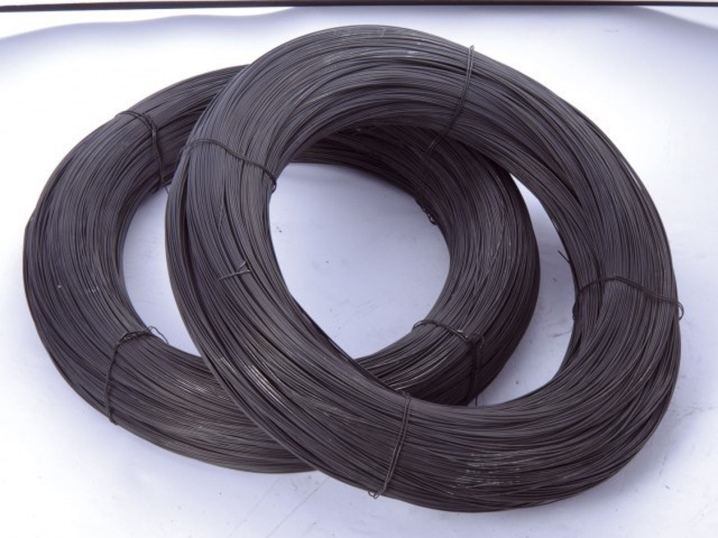
The diameter of the resulting product varies from 0.6 to 6 mm. Finished products are rolled into bays.

The choice of a specific type and diameter depends on:
- from construction technology;
- operating conditions;
- the diameter of the reinforcement to be connected;
- cost.
The wire is used when the technical process does not provide for the presence of welding. In aggressive operating conditions of products, it is preferable to use varieties with a polymer or galvanized coating. The diameter of the tying wire to be selected depends on the diameter of the reinforcement. For example, for reinforcement with D = 8.0-12.0 mm, wire with D = 1.2-1.4 mm is needed.
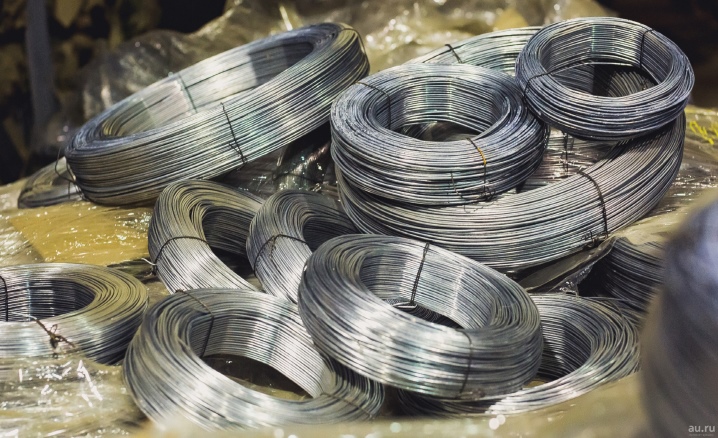
There are tables for converting kilograms of wire to meters. So, in 1 kg with a diameter:
- 1 mm length is equal to 162 m;
- 1.2 mm - 112.6 m;
- 1.4 mm - 82.6 m;
- 1.6 mm - 65.4 m;
- 1.8 mm - 50.0 m;
- 2.0 mm - 40.5 m.
The price of the material depends on the processing method. Black is the cheapest, galvanized is more expensive.

Specifications
In accordance with GOST 3282-74, knitting wire with a round cross section is produced. The diameter varies within a small range. The material is low carbon steel.
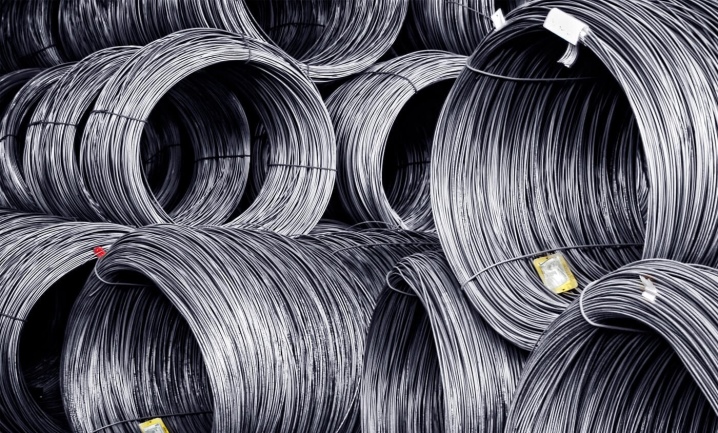
The mentioned GOST indicates that the wire is soft, that is, it has undergone heat treatment.
During annealing, internal stresses generated during thinning are removed from the metal. As a result, the structure of the steel bar becomes internally fine-grained. It is noteworthy that it is precisely such a structure that eliminates brittleness and prevents the formation of cracks. The wire is very strong, with high toughness and ductility.
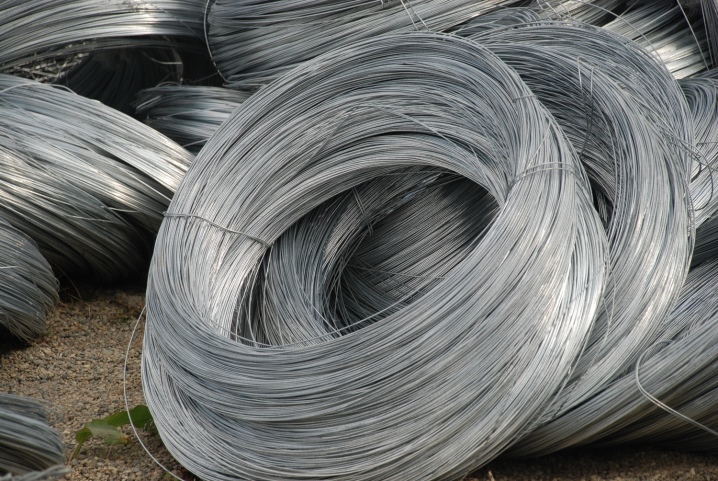
Technical characteristics of galvanized steel wire, according to GOST
The steel from which the wire is made has a chemical composition that gives it certain characteristics. So, wire, where the carbon content is less than 0.13%, is called low-carbon. The low carbon content makes it more elastic and soft. The cross-section of low-carbon steel wire according to GOST can be 0.21-6.2 millimeters.
Product packaging can be:
- in sandwiches of 450-500 kg;
- in skeins 15–120 kg;
- in heavy bays 1100-1350 kg;
- in rosettes 400-700 kg.
Also, it is possible to make wire with parameters not specified in GOST:
- Packaging (wrapping in film, polypropylene, auxiliary rings for transportation, etc.);
- Products with a minus tolerance to increase the running meter in one ton;
- The minimum amount of lubricant (but in this case it can corrode faster);
- Sizes of coils that are suitable for the customer's equipment (outer and inner diameter of the coil);
- Clear limits on the lower and upper tensile strength;
- Phosphate coating of the product;
- Packing heavy coils on a pallet for easy transportation.
Production of galvanized steel wire with the requirements of GOST

to give it more elastic mechanical properties
Taking into account the application, according to GOST, galvanized steel wire can be fired in a protective atmosphere (light firing) and in a normal atmosphere (black firing). During black firing, the steel is covered with a layer of scale due to its accelerated oxidation at elevated temperatures.
With light firing, an inert gas is connected to the furnace, and firing takes place in an oxygen-free environment. With such a light firing, the galvanized workpiece does not oxidize and is removed from the furnaces light, without the formation of scale.
4 How thick can the wire be?
The thickness of the galvanized coating varies. The thicker the coating, the more expensive it will cost and the better its performance will be. We recommend choosing the middle ground so as not to overpay, but then not to go for a new instrument.
It was decided to move the most important area of application of such material to a separate point so as not to be confused with others. This is the manufacture of various meshes that are used in construction. There, the wire is used to reinforce the floor before it is poured with concrete, and is also used in the process of creating masonry and plastering.
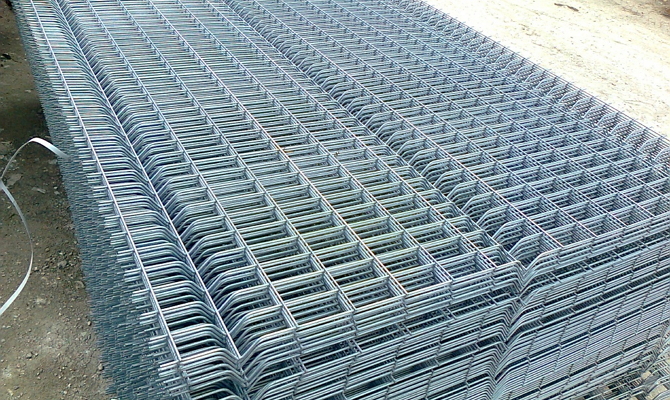 Making mesh for construction
Making mesh for construction
For these reasons, galvanized wire will be used in construction for a long time, since replacements with the same quality level have not yet been invented for it.
We hope that after this review, any price list for such a specific product as galvanized wire will become clearer for you and you will be able to understand it. Just in case, we repeat that galvanized wire differs among themselves by the type of section, diameter, method of galvanizing and the steel used. By understanding these things, you can understand when a thin 3 mm is suitable for you, when 4 mm is more suitable, and when 2 mm is fine. And even something as specific as 2.2 mm galvanized wire rod will no longer surprise you.
- Galvanized wire with a diameter of 2 mm. The thinnest and softest. This material with a diameter of 2 mm can be easily knitted by hand, but it is not suitable for serious electrical work.
- The 2.2 mm diameter is not much different from the previous version.
- Diameter 3 mm. If a galvanized 3 mm wire is used, higher strength and durability results can be obtained than if a 2 mm diameter wire is used.
- Diameter 4 mm, which has average characteristics in all respects. It is still quite soft, but at the same time it is already very strong and, in terms of its cross section, is quite suitable for use as grounding or for other electrical work. Galvanized 4 mm wire rod is also quite useful in the household.
- Galvanized wire 6 mm in diameter is much less common. It is quite suitable for use in the mesh for finishing work. This is where a galvanized 6 mm string is usually found.
- Galvanized wire 8 mm, the thickest of those that can be found in a regular store. It is ideal for masonry work, concrete floor mesh, etc. But galvanized 8 mm wire rod costs and weighs much more than its younger counterparts. Therefore, a galvanized 8 mm string should be purchased only if you are sure that you need it. In other cases, galvanized 8 mm wire will only be a waste of money, because the more millimeters, the more expensive it is.
Scope of application
Knitting wire is in demand by manufacturers of reinforced concrete structures.
With her help:
- reinforcement is tied into a strong frame;
- fasteners are securely fixed before welding.

Soft wire is used for manufacturing:
- chain-link mesh;
- masonry nets;
- steel ropes;
- barbed wire.
It is in demand when transporting various goods. In some cases, individual parts are tied with wire in bundles, coils and rolls, in others it is used to secure containers and containers.

Thin steel filaments are used in utilities, at home, on construction sites and in production workshops.
They are also required:
- when installing fences;
- production of paper clips, ruffs;
- tying logs;
- the manufacture of all kinds of small lightweight structures, for example, wreaths;
- fixing grids and in many other cases.
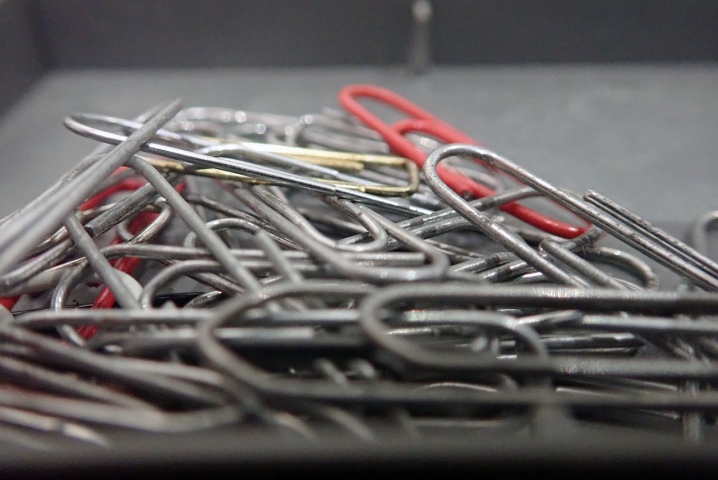
For information on which wire is the best to use for tension in vineyards, see the next video.
1 Purpose of this material
Areas in which wire rope can be used are quite numerous. It is used as a semi-finished product in the manufacture of other metal products in factory production. Galvanized wire rope is used to create various options for cables, nets, springs and even such a specific thing as electrodes and electric current wires.
 Galvanized Wire Rope
Galvanized Wire Rope
The most common type is the one with a round cross-section. Variants with an oval and square hexagonal section are inferior to him in prevalence both in industrial production and in everyday life. The rarest is the galvanized wire rope 4 mm with a trapezoidal section.
Scope of flexible material
It is very difficult to list the scope of such a product. In production, galvanized steel wire is used to manufacture:
- Grids.
- Trosov.
- Springs.
- Electrical wires.
- Electrodes.
The most widespread is the round section. In everyday life, other sections are also used:
- Square.
- Oval.
- Hexagonal.
It is very rare to find a 4 mm galvanized product with a trapezoidal section.
Wire manufacturing technology
Zinc coating of such products is performed in several ways. They have characteristic differences.
- Electroplated coating. When performing such work, a saline solution is used, coupled with an electric current. The product will act as a cathode. Any external electrode becomes the anode.
- Hot method. The material is dipped into a molten zinc solution with other chemicals. If all the requirements of the technological process are followed, the zinc coating becomes maximum. If the temperature regime is violated, the product may lose its strength.
When buying a product from a specialist store, you can check its condition. It is enough just to bend the wire rod and then sharply unbend it. A characteristic trace will remain on the metal surface. If it is clearly seen that the wire will soon break, therefore, its strength characteristics have decreased. This material won't last very long. It will break quickly.
Positive characteristics of wire rod
 Galvanized material has gained great popularity due to its excellent properties. They are far superior to other products that do not have a special coating. The advantages of galvanized wire include:
Galvanized material has gained great popularity due to its excellent properties. They are far superior to other products that do not have a special coating. The advantages of galvanized wire include:
Thanks to zinc, any influence of the atmosphere is reflected. In other words, the product remains neutral to high humidity and atmospheric conditions. Under such conditions, ordinary wire will quickly rust and crumble. Galvanized wire rod is designed for a long service life.
The appearance of the product looks nice and very modern.
Small nails are made from such galvanized wire, which has undergone a good heat treatment. The most popular are the diameters of 3-8 mm. Very good nails are obtained from this section.
Zinc coated wire rod is used to create armored wiring when laying various types of cable.
Optimum coating thickness
 In the manufacture of wire rod, zinc coating is made of different thicknesses. The performance characteristics as well as the cost of the product depend on the thickness of the coating. The thicker, the more expensive. Professionals recommend using the average.
In the manufacture of wire rod, zinc coating is made of different thicknesses. The performance characteristics as well as the cost of the product depend on the thickness of the coating. The thicker, the more expensive. Professionals recommend using the average.
In construction, such wire is used to reinforce concrete, perform plastering work, and create brickwork.
Wire rod with a diameter of 2 mm is considered the thinnest. Thanks to its softness, it is easy to work with your hands. It is used in electrical engineering. So, 3 mm galvanized is highly durable. It is designed for long-term operation.
Much less often you can find a wire with a cross section of 6 mm. It is used to make mesh when finishing work is done.And 8 mm galvanized wire rod is used to create a concrete floor, for reinforcement, when laying walls and performing a variety of construction work.
